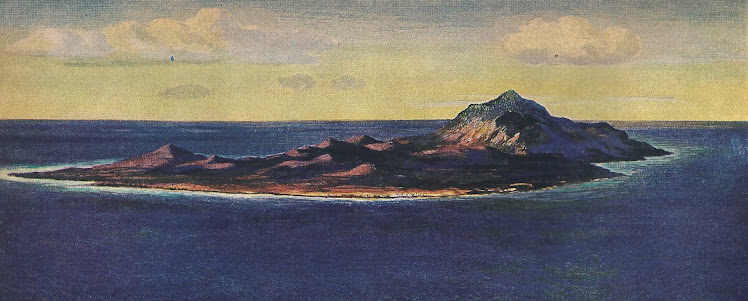Artist Peter Hurd made this painting of Wideawake Field on Ascension Island for Life Magazine, April 30, 1945. By the time this was published, my father, then Captain Chapman was in the middle of the thick of it during the Battle of Okinawa.
(Editor's note: this is a continuation of a piece my father, Col. William Ashley Chapman, wrote about his experiences in World War II, for the book World War II Reminiscences, edited by John H. Roush, Jr.)
by
Col. William Ashley Chapman
"My unit landed on Ie Shima (near Okinawa) on April 19, 1945, the day after Ernie Pyle was killed there. Along with the other EAB's (ed: Engineer Aviation Battalions) we built runways and all necessary facilities again on time.
We were on Ie Shima about four months and were bombed every day, sometimes more than once, until the time of surrender. We saw kamikazi planes being shot down while others were seen striking ships. An LST (ed: Landing Ship Tank) was hit by a kamikazi, was beached and abandoned. The hulk was later hit by several more suicide planes.











